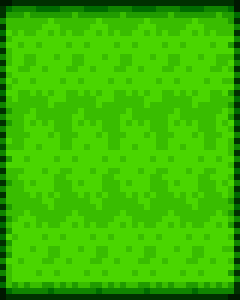Mercator said:
Yes, quite. There is some regularity, but I couldn't figure it out so easily. The most puzzling thing are that there are only 2 squares with fertility 10. One on the right edge and one on the left edge...
... Or was that where the other two settlers were standing?
No, the other settlers had no effect otherwise I would've changed them too.


There are 4 tiles along the east and west borders of the map that contain 2 resources within their city radii. Two, (0,8) and (79,25), have values of 9 (just like most of the other edge tiles except for the corners) and two, (0,24) and (79,9), have values of 10. I believe tiles that lie in the inner ring (8 tiles) of the city radius are more heavily weighted than those from the outer ring (12 tiles). In the case of the two value-9 tiles, both of their resources lie on the outer ring. This may not be enough to push fertility up to the next level. Along the map's edge, one resource within the inner ring doesn't seem enough, either. The two value-10 tiles have one resource located on the inner ring and one on the outer. My guess is that this combination is enough to bump the fertility up to the next level. Near the centre of the map, two resources in the outer ring will push values up to the next level hitting the max at 15.
BTW, are you reading from the all-plains graphic I posted or did you go and export that thing as a map file using MapEdit? If so, the resource seed is 56.
A couple of other observations:
Rivers do not add 2 to the fertility value of a tile (as I suggested earlier in the thread). They contribute to the values of the surrounding tiles when they are used to calculate fertility. So if you have a lot of rivers within the city radius, their effect will be marked. It's probably the same for resources.
When calculating the fertility of a particular tile, the fertility values of surrounding tiles are not factored in to the equation; neither is the calculation based on a simple fertile/non-fertile rule. Terrain slot is what determines a tile's contribution to fertility. If you surround a grassland/plains tile with a uniform terrain type, it will end up with values like these (resource seed constant):
Code:
Composition of City Radius Tile Value
Grassland: 15
Plains: 13
Forest: 13
Hills: 12
Tundra: 11
Ocean: 11
Desert: 8
Mountains: 8
Glacier: 8
Swamp: 8
Jungle: 8
Off-Map: 8*
* You can't actually have a 1-tile map, but this seems pretty obvious.
It would appear then that each terrain type gets a rating of some sort.
yoshi said:
I really have no idea why I posted that question...oh wait, I remember why: I'm ********.
Welcome to the club.

It seems it's everyone's duty to post at least one

or

in this thread. It'll be my turn next.

 I'm still using 2.1. I'll check it out...
I'm still using 2.1. I'll check it out...

 I just used it to create a graphic of a 40x50 all-plains map showing the effect of resource seeding on fertility. I changed the colours for readability: darkest = 8, lightest = 15.
I just used it to create a graphic of a 40x50 all-plains map showing the effect of resource seeding on fertility. I changed the colours for readability: darkest = 8, lightest = 15.
 What kind of caveman are you?
What kind of caveman are you? 
 I've never used one. Well, only once or twice, but for nothing serious.
I've never used one. Well, only once or twice, but for nothing serious.
 Artificial Intelligence. I've never had to write (m)any essays though. But I don't think they're used much at all. The only spreadsheets I've seen being used are just simple tables, no formulas (e.g. exam results).
Artificial Intelligence. I've never had to write (m)any essays though. But I don't think they're used much at all. The only spreadsheets I've seen being used are just simple tables, no formulas (e.g. exam results).
 ... Thanks.
... Thanks.

